#27 Historische Museen, Secondhandläden, Einkaufzentrentren, Kinos / Historical museums, second-hand stores, shopping centers, cinemas
Über vieles habe ich noch nicht geschrieben und ich entdecke immer wieder Neues. Selbst jetzt in den letzten Wochen meines ersten Semester in Vilnius, in denen Prüfungen anstehen. An manchen Tagen sitze ich in der Nationalbibliothek, schreibe an einem Essay, arbeite an einer Präsentation, lese Texte für ein Exam. Ich habe den Musikraum im obersten Stock entdeckt, in dem ein E-Piano mit Kopfhörern steht. Ein Instrument hat mir bis dahin gefehlt. In den Pausen spiele ich „Chasing Cars“. Zum Mittagessen gehe ich die Gediminas Avenue hinunter zu „+++“. Dort ist es zwar nicht gemütlich, aber das Mittagsmenü inklusive Suppe, Hauptgericht und Getränk für 3,99€ kommt schnell.
Gegen Abend gehe ich dann in die Buchhandlung, in die ein Café („Depeche coffee“) integriert ist, und freue mich, wenn noch ein Platz frei ist. Ich gehe zur Theke und bestelle mir einen Kakao für 1,70€. Aus der Maschine fließt er in die Tasse, die ich direkt bekomme. Damit lasse ich mich auf einem der Sitzpolster an der Fensterfront nieder und lese „Harry Potter“. An den anderen Tischen sitzen junge Menschen und arbeiten an Laptops und Collegeblöcken. Vielleicht ist es das, was ich später am meisten vermissen werde: Alle zehn Meter ein Café vorzufinden, in dem Selbstbedienung und gemütliche Sitzgelegenheiten erlauben, Stunden zu verbringen.
/
There’s a lot I haven’t written about yet, and I keep discovering new things. Even now in the last weeks of my first semester in Vilnius, when exams are coming up. Some days I sit in the National Library, writing an essay, working on a presentation, reading texts for an exam. I discovered the music room on the top floor, where there is an electric piano with headphones. I had been missing an instrument until then. During breaks, I play „Chasing Cars.“ For lunch I go down Gediminas Avenue to „+++“. There it is not comfortable, but the lunch menu including soup, main course and drink for 3.99€ comes quickly.
Towards evening, I go to the bookstore, which has an integrated café („Depeche coffee“), and am happy to see that there is still a seat available. I go to the counter and order a cocoa for 1.70€. From the machine it flows into the cup, which I get directly. With it I settle down on one of the cushions at the window front and read „Harry Potter“. Young people sit at the other tables, working on laptops and college notebooks. Maybe that’s what I’ll miss most later: Finding a café every ten meters where self-service and comfortable seating allow you to spend hours.
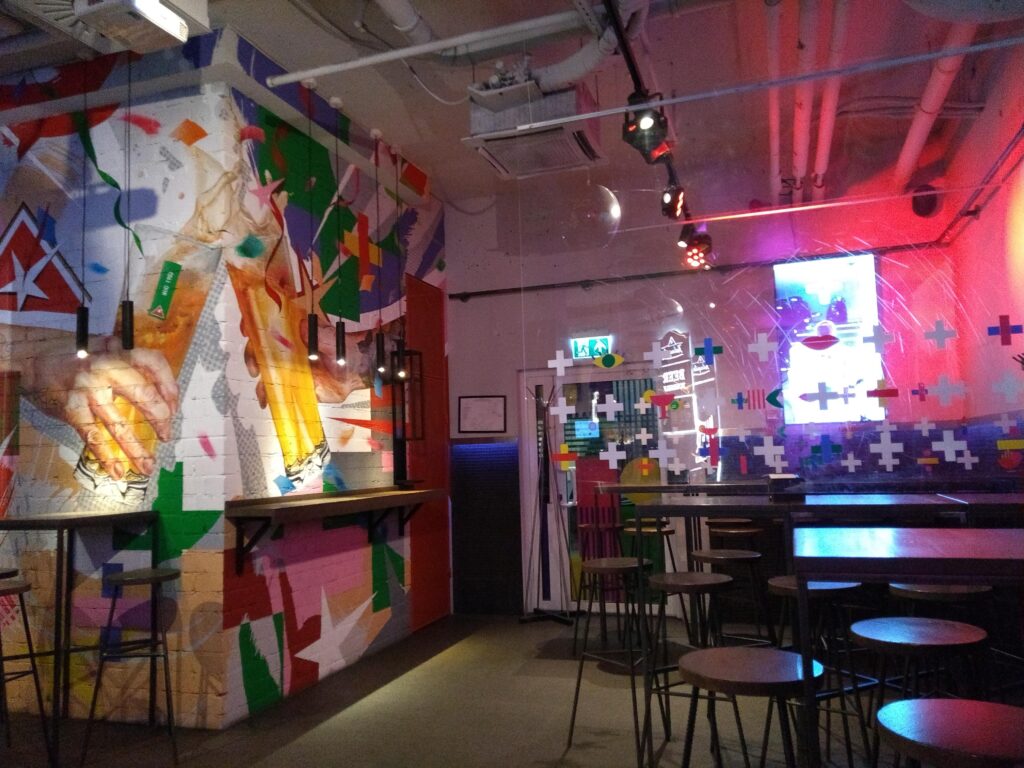
An einem anderen Tag scheint die Sonne. Ich weiß inzwischen, wie flüchtig Tageslicht ist und fahre zu den Green Lakes. Den See „Balsys“ kenne ich schon. Ich gehe über den Strand.
/
On another day, the sun is shining. I know by now how fleeting daylight is and drive to the Green Lakes. I already know the lake „Balsys“. I walk across the beach.
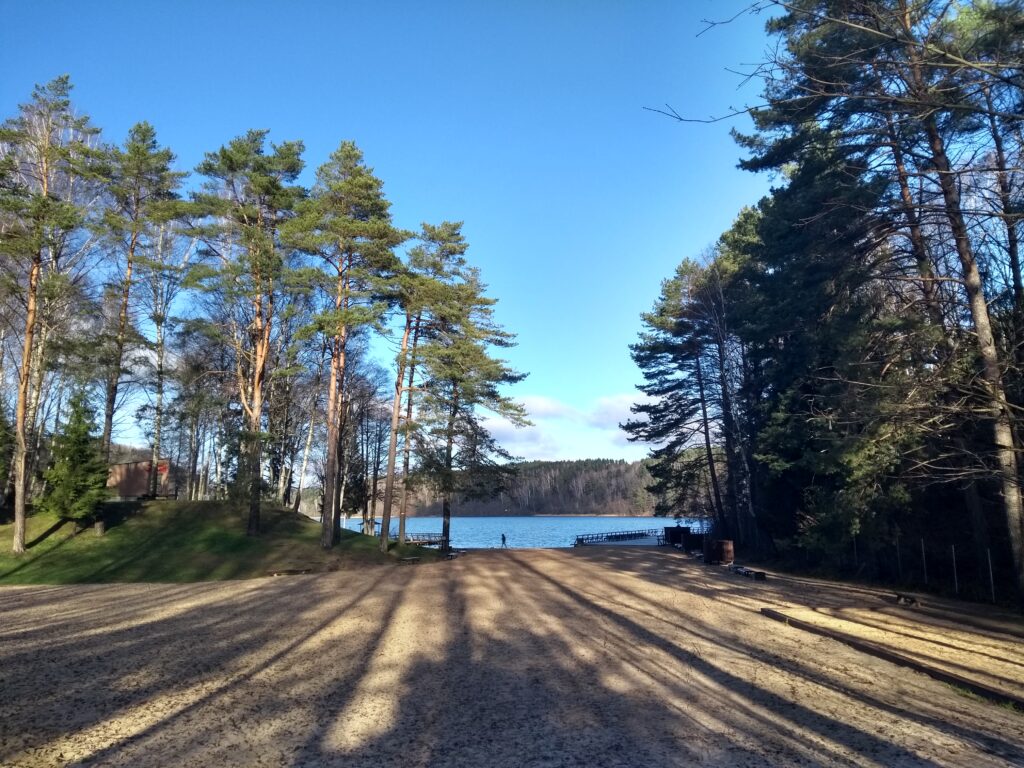
Der Sand ist gefroren. Am Ufer liegen Schwäne. Von den Kajaks, die noch im Oktober die erste Hälfte des Sees füllten, keine Spur. Es ist so ruhig, wie ich mir einen Sommertag wünschen würde.
/
The sand is frozen. Swans lie on the shore. There is no sign of the kayaks that filled the first half of the lake as recently as October. It is as calm as I would like a summer day to be.

An einem warmen Tag werde ich mich auf eine der Liegen legen. Ich werde in diesem See schwimmen.
/
On a warm day, I will lie down on one of the loungers. I will swim in this lake.
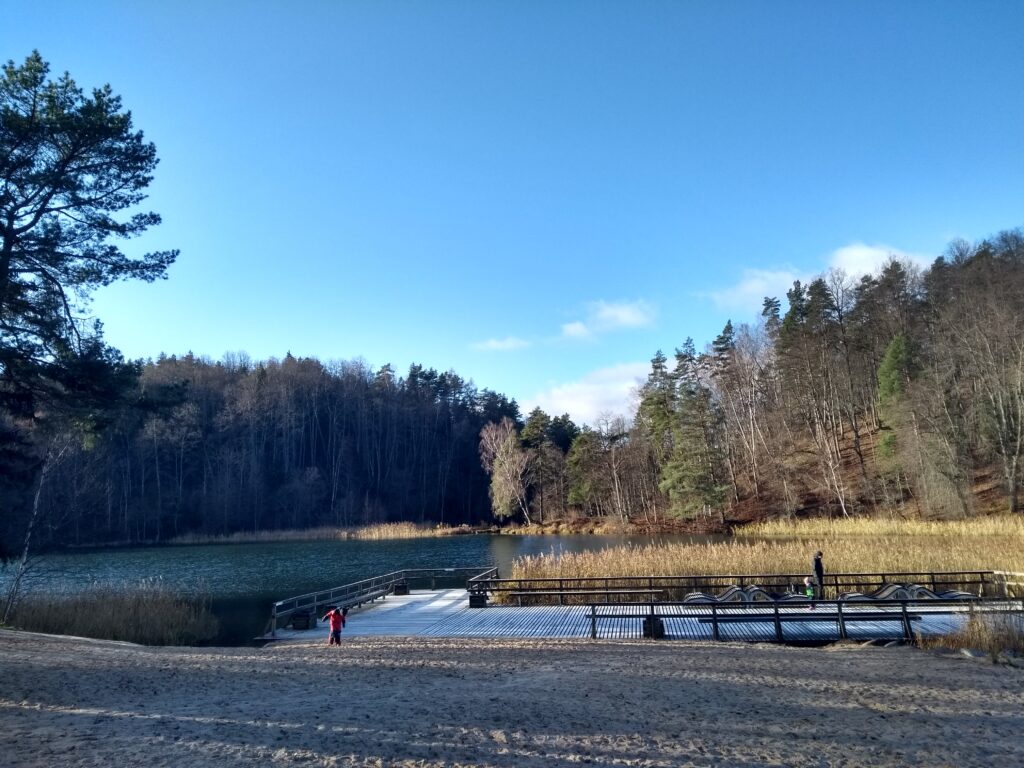
Den See „Gulbinas“ kenne ich noch nicht. Ich mache mich auf den Weg zu ihm, wandere das Ufer entlang, über Wurzeln und Baumstämme, hoch und runter, eine gute Stunde lang. Dann biege ich in den Wald ein und gehe noch ein Stück.
/
I don’t know the lake „Gulbinas“ yet. I make my way to it, walk along the shore, over roots and tree trunks, up and down, for a good hour. Then I turn into the forest and walk a bit more.
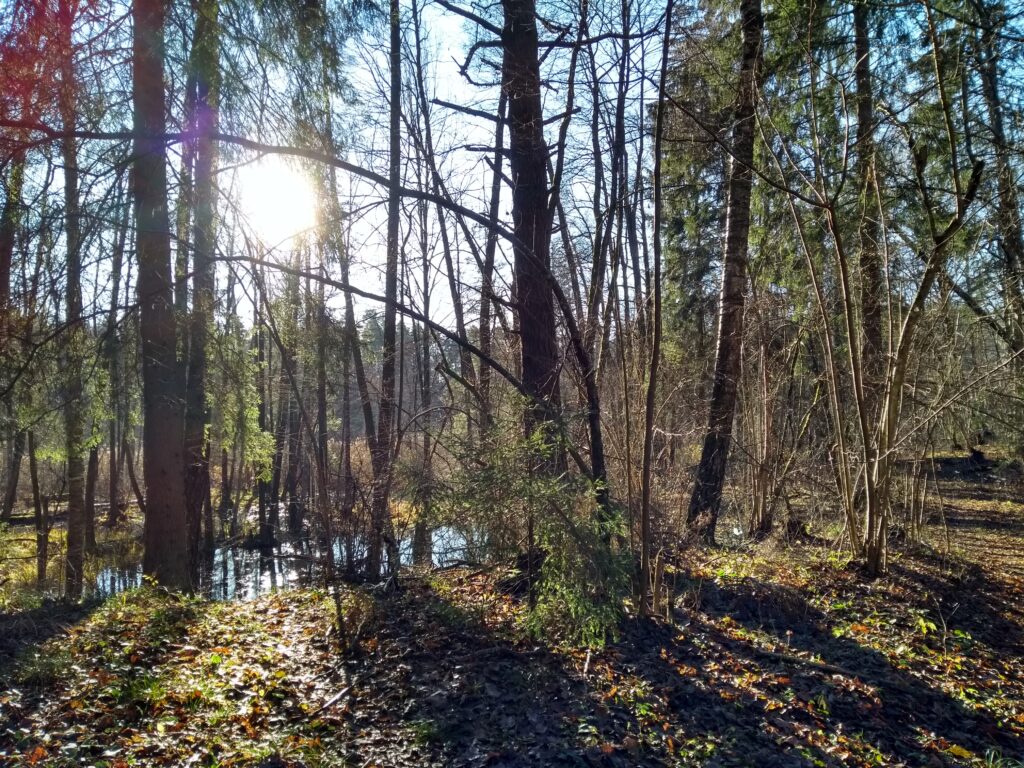
Ich befinde mich allein in einem Wald fern meiner Heimat – er erinnert mich an die Wälder, durch die ich früher gewandert bin. Nur die Seen sind anders. Ich werfe einen Blick auf den „Gulbinas“ und kehre wieder um:
/
I find myself alone in a forest far from my home – it reminds me of the forests I used to wander through. Only the lakes are different. I take a look at the „Gulbinas“ and turn back:
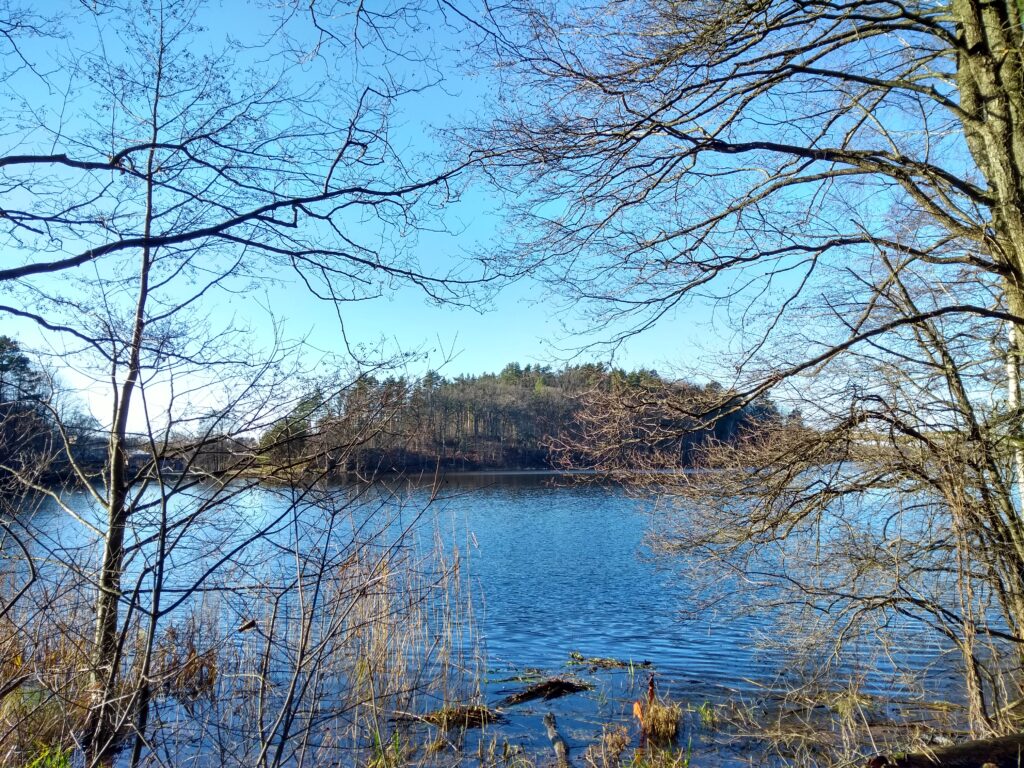
In meiner zwölften Woche in Vilnius gehe ich zum ersten Mal in die St. Peter- und Paulkirche, an der ich regelmäßig vorbeifahre und umsteige.
/
In my twelfth week in Vilnius, I go for the first time to St. Peter and Paul’s Church, which I pass regularly and change trains.
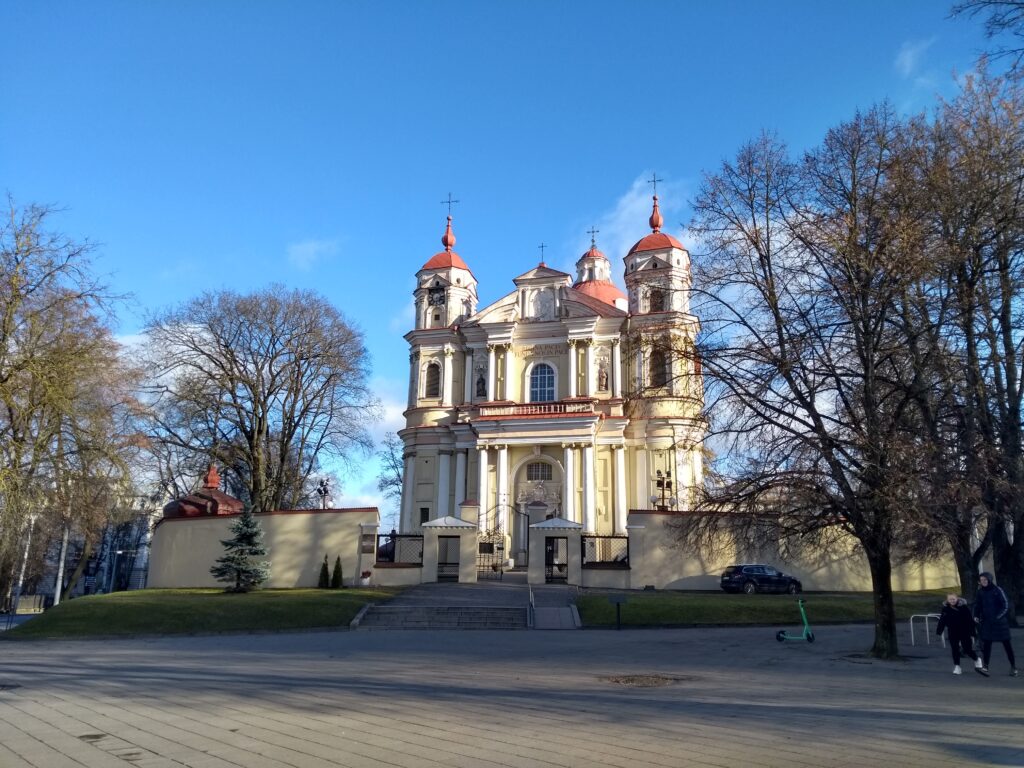
Ein Kircheninneres wie dieses habe ich noch nicht gesehen. Nur ein Stück der Decke ist bemalt, der Rest gebildhauert.
/
I have not seen a church interior like this before. Only one piece of the ceiling is painted, the rest is sculptured.
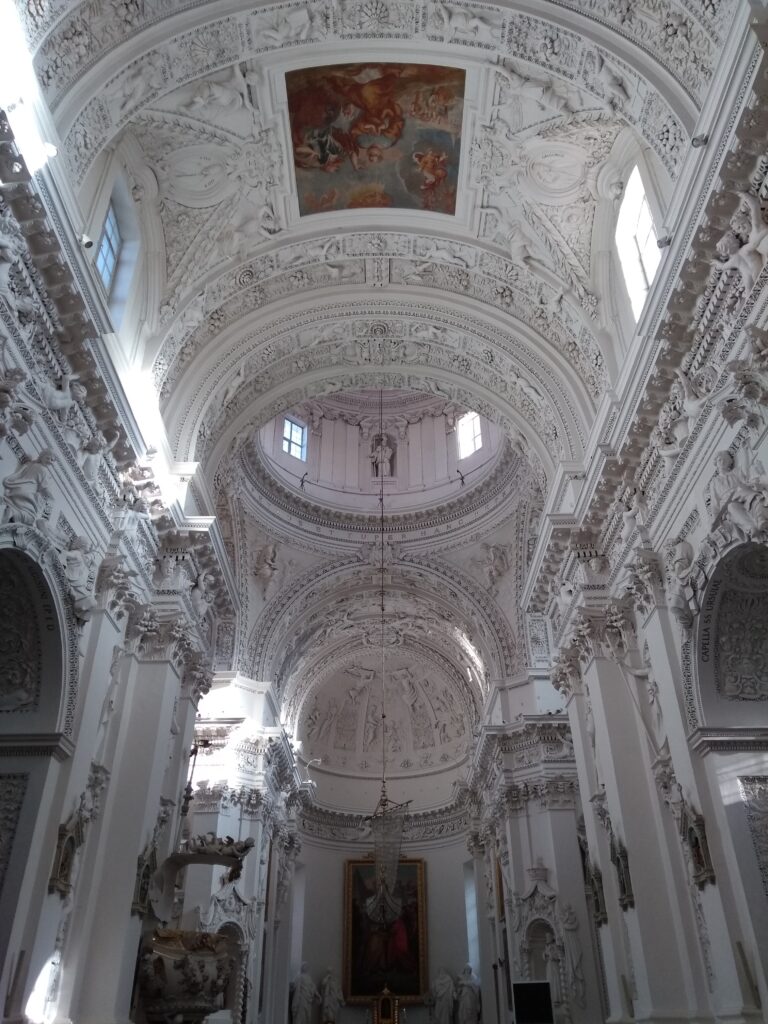
Danach gehe ich an der Neris entlang, ein Stück, das ich vorher auch noch nicht betreten habe.
/
After that, I walk along the Neris, a piece I have not entered before either.
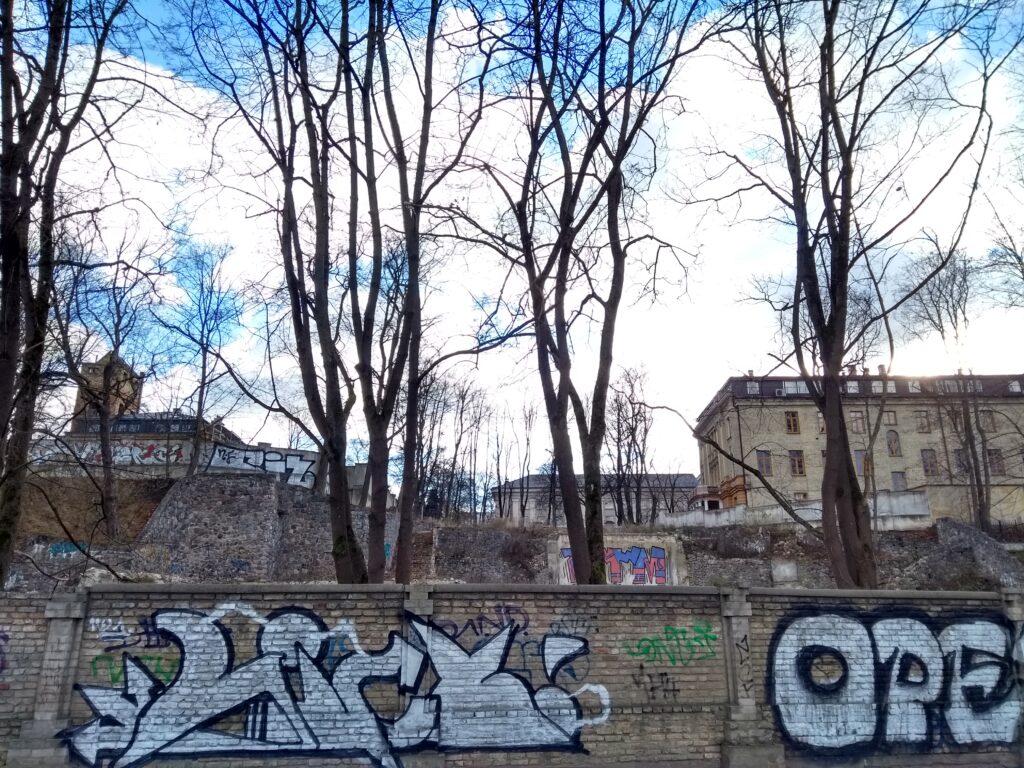
Auf der anderen Seite des Flusses erstreckt sich eine Kletterwand.
/
On the other side of the river stretches a climbing wall.
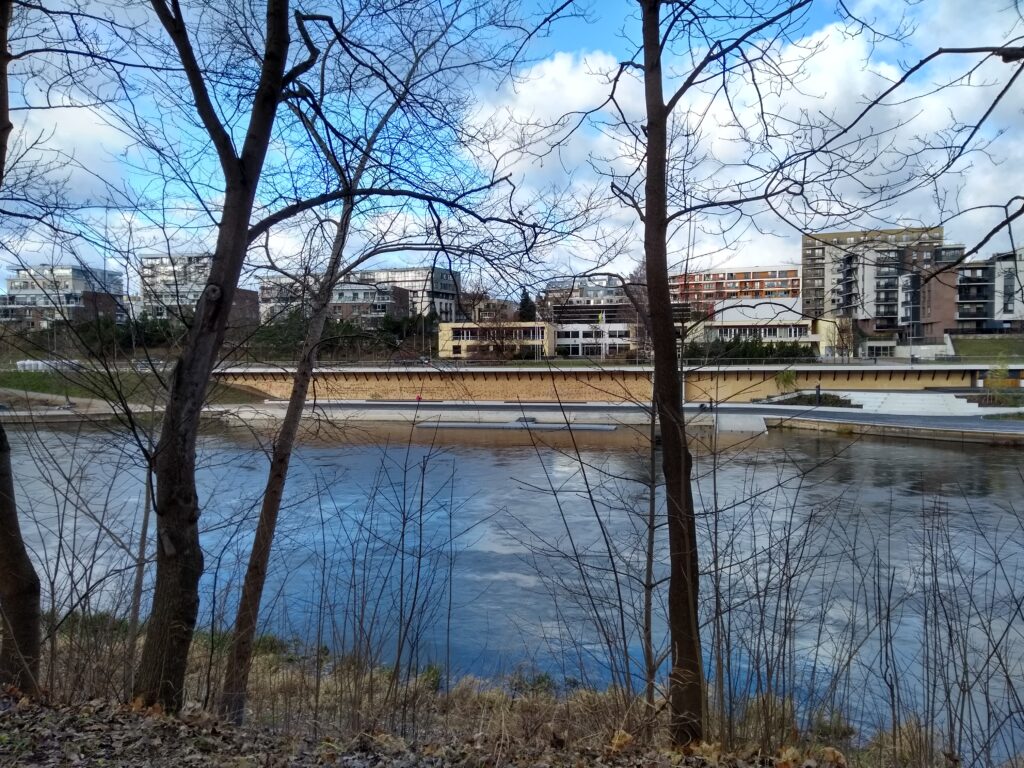
Ist diese Fassade nicht wunderschön?
/
Isn’t this facade beautiful?
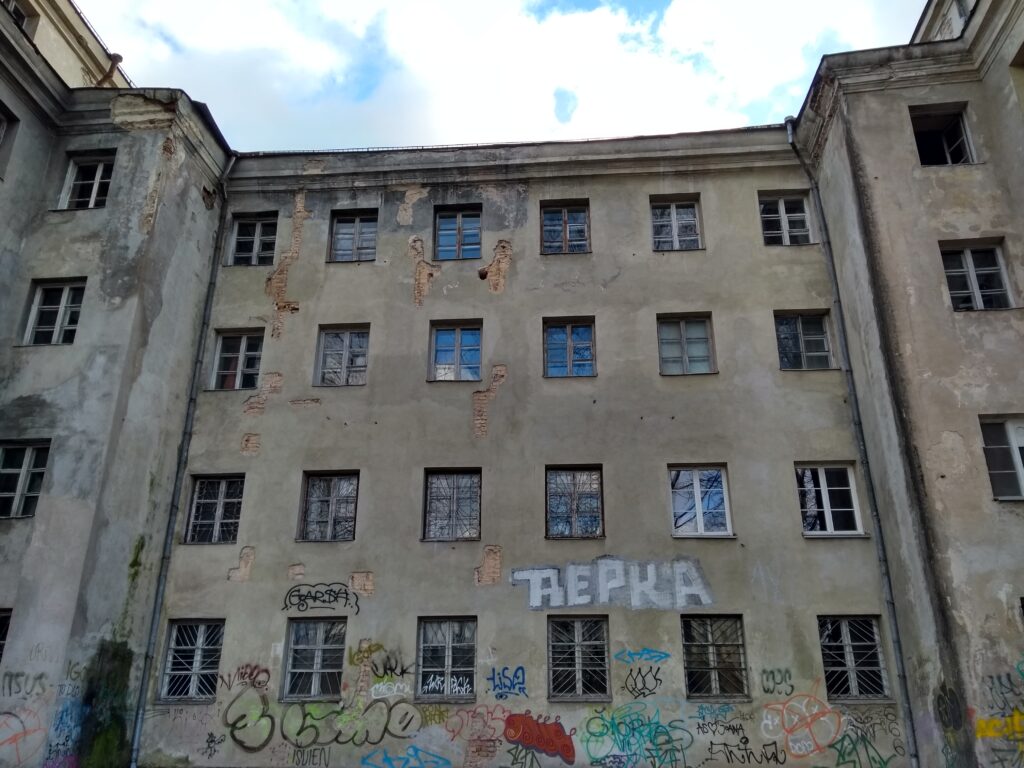
Um welche Personen handelt es sich bei der folgenden Statue wohl?
/
Who do you think the following statue is about?

Nicht etwa um Stalin, Chuchill und Roosevelt, sondern um die Brüder Jonas, Antanas und Petras Vileišis, die Anfang des 20. Jahrhunderts Teil der litauischen Unabhängigkeitsbewegung waren (1918 erlangte Litauen die Unabhängigkeit vom Russischen Kaiserreich). Wer sich für die Geschichte Litauens interessiert, sollte ins Litauische Nationalmuseum und ins Museum der Opfer des Genozids in Vilnius gehen.
/
Not Stalin, Chuchill and Roosevelt, but the brothers Jonas, Antanas and Petras Vileišis, who were part of the Lithuanian independence movement at the beginning of the 20th century (Lithuania gained independence from the Russian Empire in 1918). Those interested in the history of Lithuania should go to the Lithuanian National Museum and the Museum of the Victims of the Genocide in Vilnius.
Das Litauische Nationalmuseum sieht zwar von außen unspektulär aus, bietet aber Einblick in gewonnene Schlachten, früheres privates Leben, die wachsende Bedeutung des Buches in Litauen und Anfänge der 1579 gegründeten Universität Vilnius (eine der ältesten Mitteleuropas):
/
The Lithuanian National Museum may look unspectacular from the outside, but it offers insight into battles won, early private life, the growing importance of books in Lithuania, and beginnings of Vilnius University (one of the oldest in Central Europe), founded in 1579:
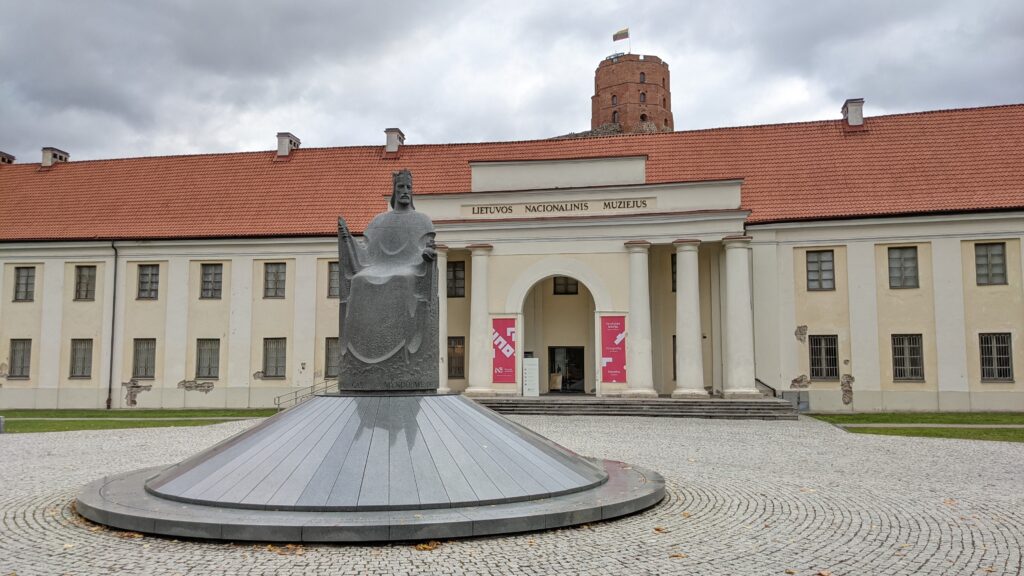

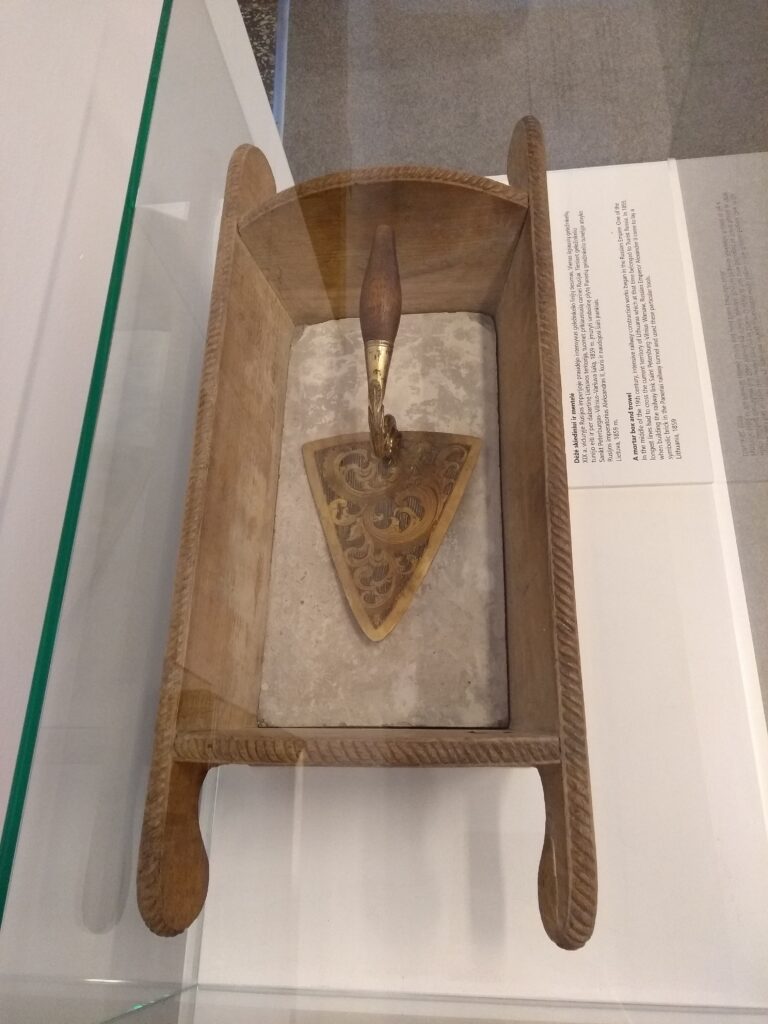

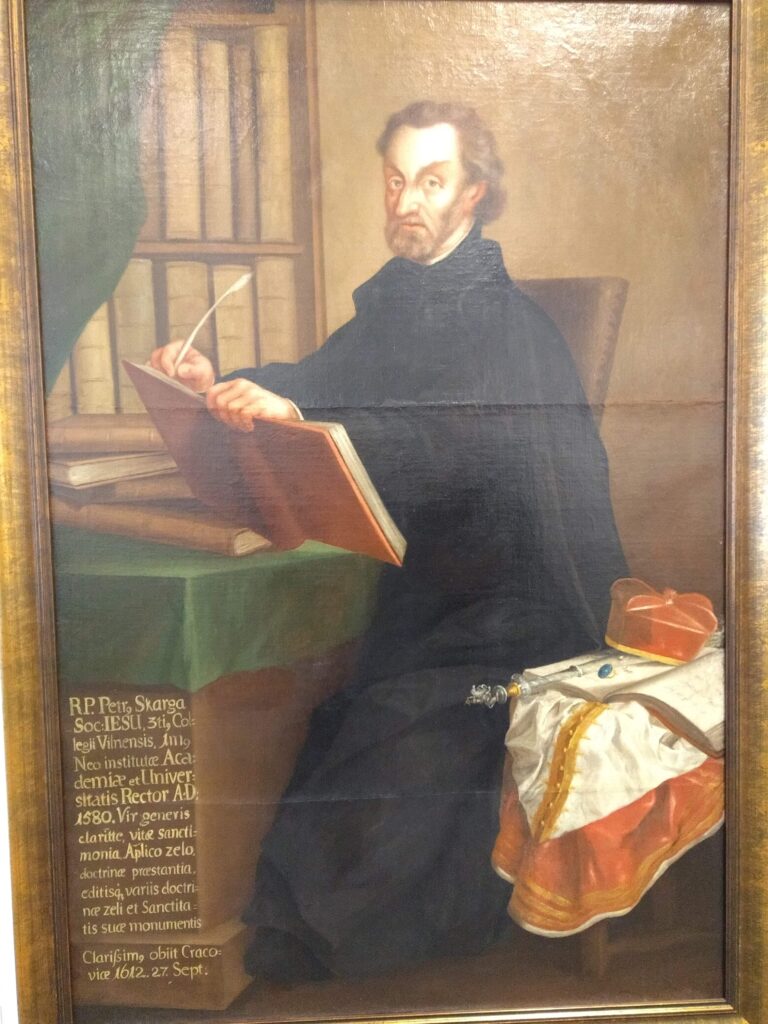
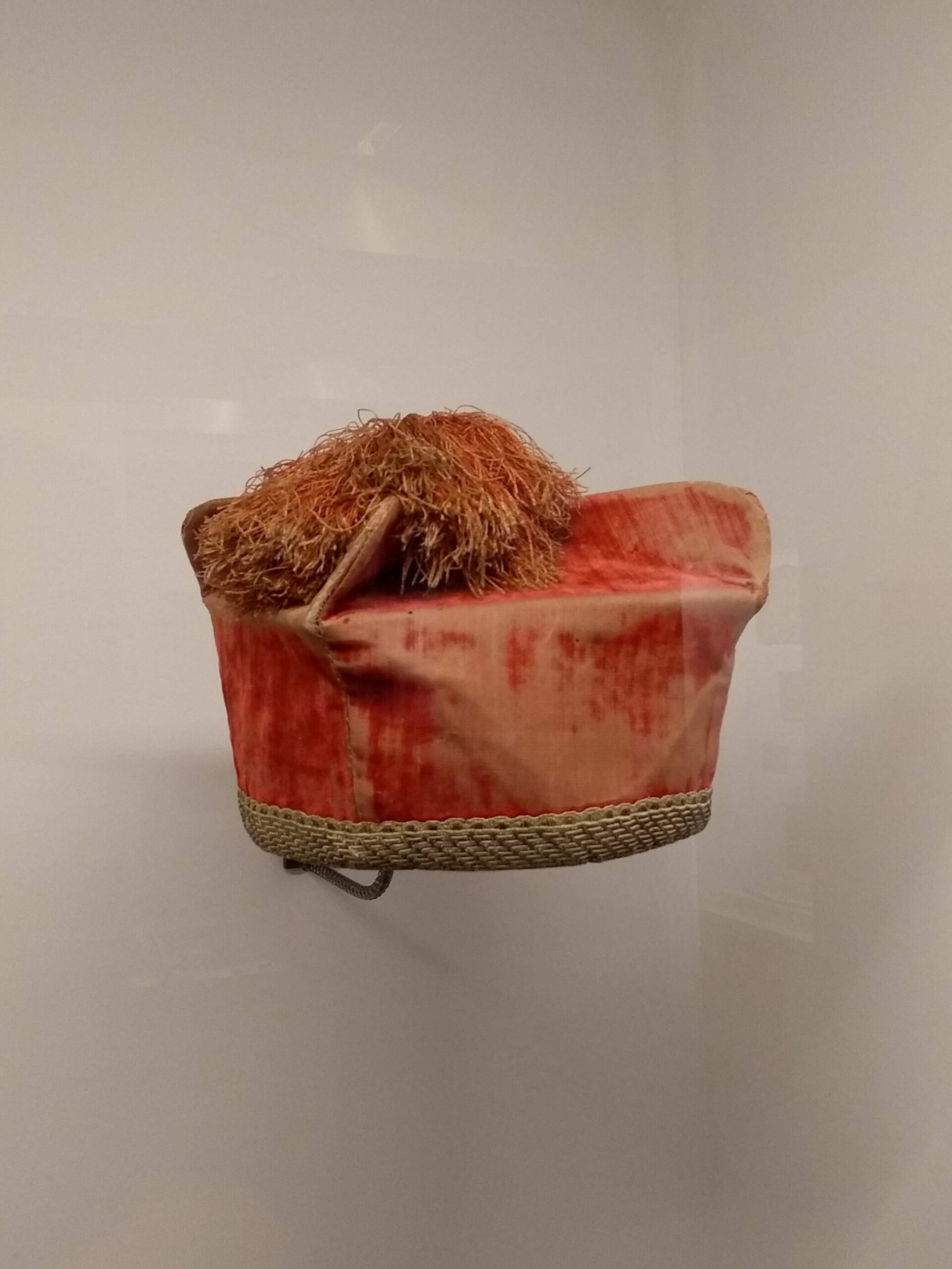
Das Nationalmuseum berichtet nicht viel von der sowjetischen Besetzung Litauens (ab 1940 // 1945 bis 1990 war Litauen Teil der Sowjetunion). Dieser dunkle Teil der litauischen Geschichte ist im Museum der Opfer des Genozids zu finden. Die deutsche Besetzung Litauens von 1941 bis 1944 klingt darin nur an. Von außen lässt das Gebäude nicht erahnen, dass in ihm verhört, gefoltert und hingerichtet wurde.
/
The National Museum does not tell much about the Soviet occupation of Lithuania (from 1940 // 1945 to 1990 Lithuania was part of the Soviet Union). This dark part of Lithuanian history can be found in the Museum of the Victims of Genocide. The German occupation of Lithuania from 1941 to 1944 only echoes in it. From the outside, the building does not give a hint of the interrogation, torture and execution that took place inside.
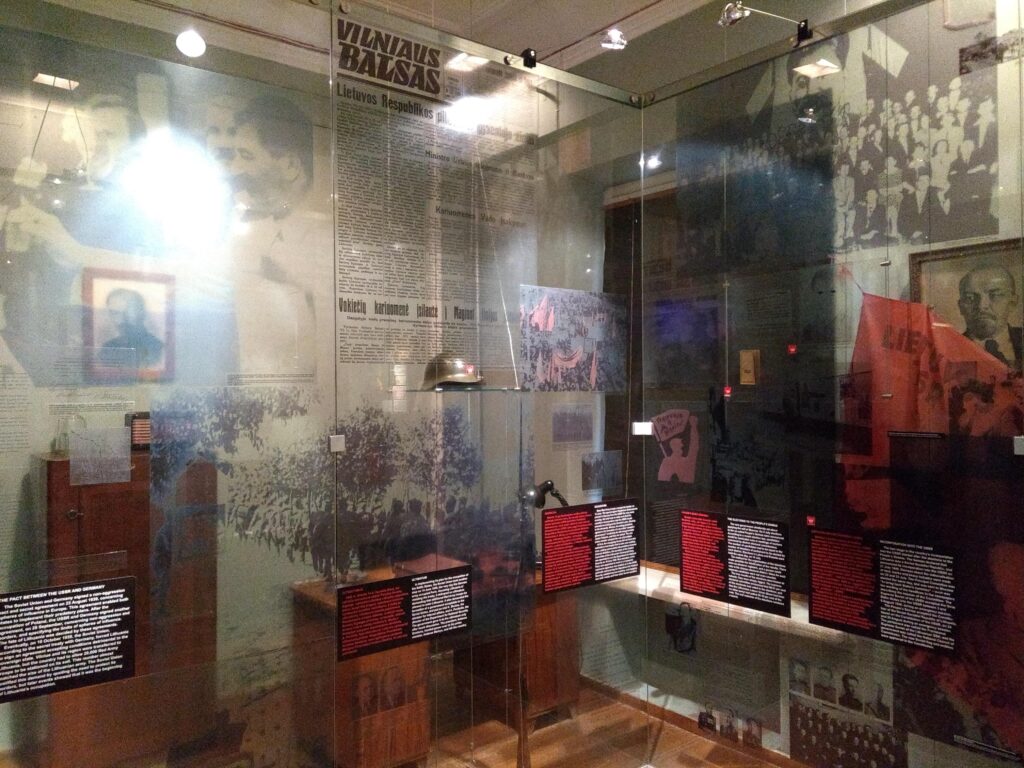
Wie für das Stasimuseum in Berlin sollte man für dieses Museum am besten mehrere Stunden einplanen. Am Anfang habe ich mir noch alles durchgelesen; als es Richtung Unabhängigkeit ging, nur noch einen Blick in die Räume geworfen. Im Gedächtnis geblieben sind mir besonders die Fotos der Leichen, die Porträts der Partisan*innen, von denen die meisten jung gestorben sind, und die ehemaligen Zellen im Keller:
/
As for the Stasi Museum in Berlin, it is best to plan several hours for this museum. At the beginning, I read through everything; when it went towards independence, I only took a look into the rooms. What I remember most are the photos of the corpses, the portraits of the partisans, most of whom died young, and the former cells in the basement:
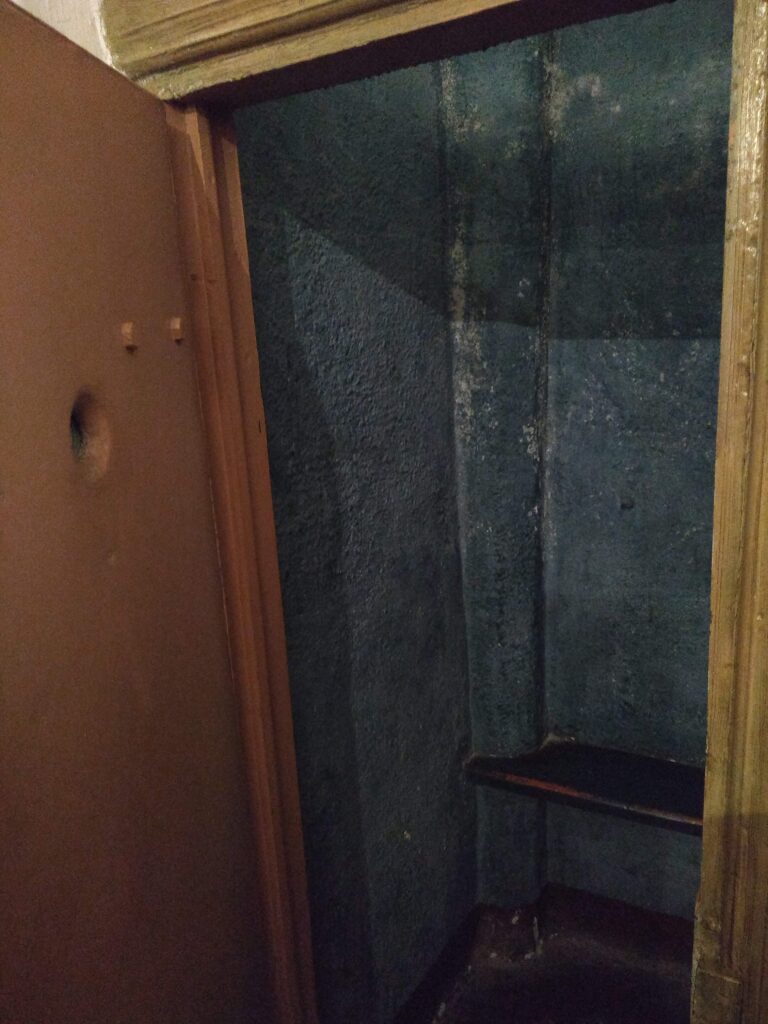
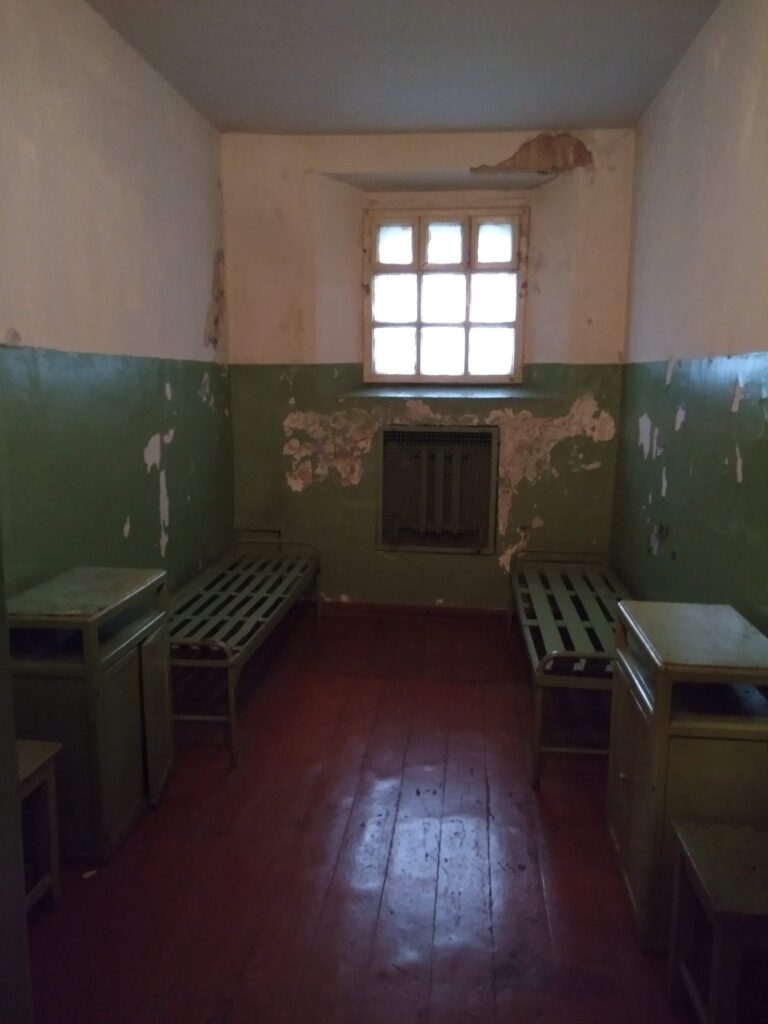
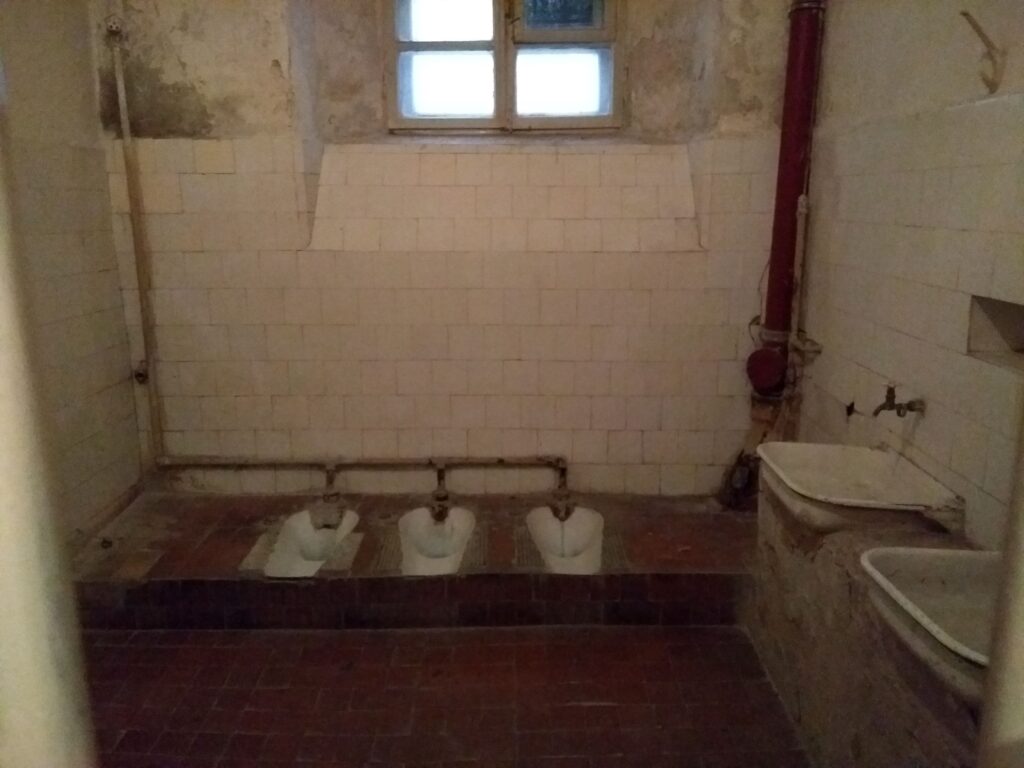
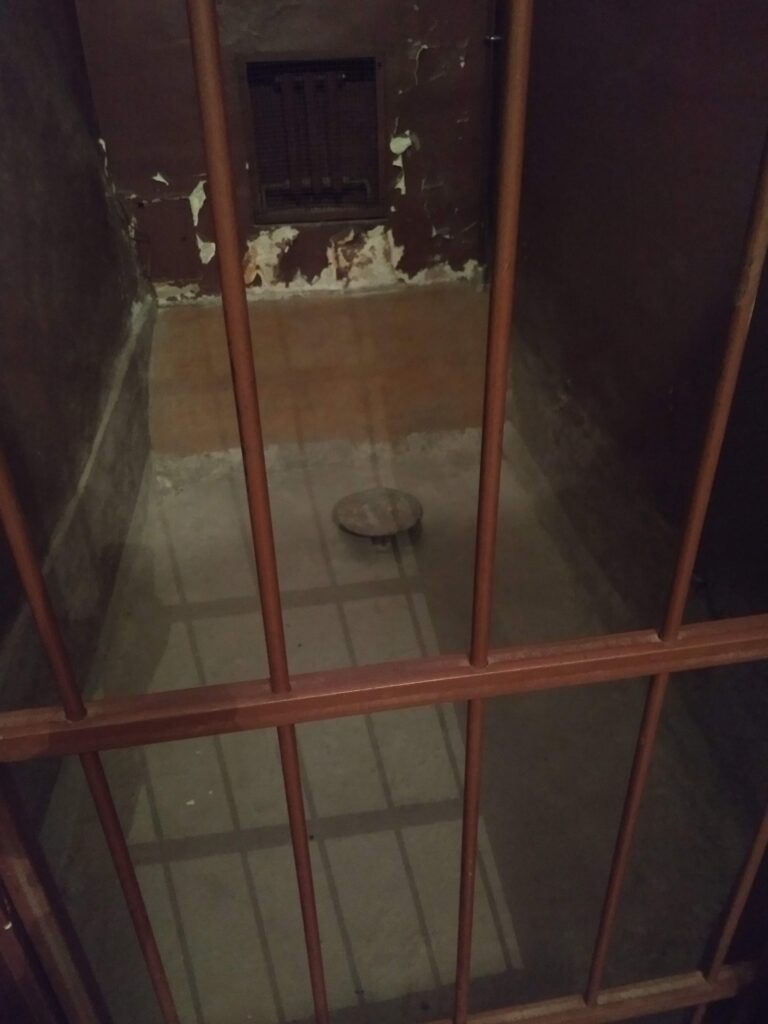
An jedem letzten Sonntag im Monat gibt es in viele Museen freien Eintritt. Das letzte Mal wollte ich mit einer Freundin ins Illusionenmuseum, das für Studierende 9€ kostet. Leider bot gerade dieses Museum als Privatmuseum keinen freien Eintritt an. Deshalb besuchten wir das Museum daneben, in dem es um nicht umgesetzte Bauvorhaben für Vilnius ging. Zum Glück kannte ich Vilnius bis dahin schon ganz gut und konnte das ein oder andere Ausstellungsstück einem bekannten Ort zuordnen. Eine Angestellte konnte Deutsch und gab uns eine sehr interessante Einzelführung darüber, was hätte gewesen sein können. Dabei erfuhren wir auch etwas über die Hintergründe der Gebäude und Plätze, die wir kannten.
/
On the last Sunday of every month, many museums offer free admission. Last time I wanted to go with a friend to the Illusion Museum, which costs 9€ for students. Unfortunately, just this museum as a private museum did not offer free admission. Therefore, we visited the museum next to it, which was about unimplemented construction projects for Vilnius. Fortunately, I knew Vilnius quite well by then and could assign one or the other exhibit to a known place. An employee knew German and gave us a very interesting one-on-one tour about what might have been. We also learned something about the background of the buildings and places we knew.
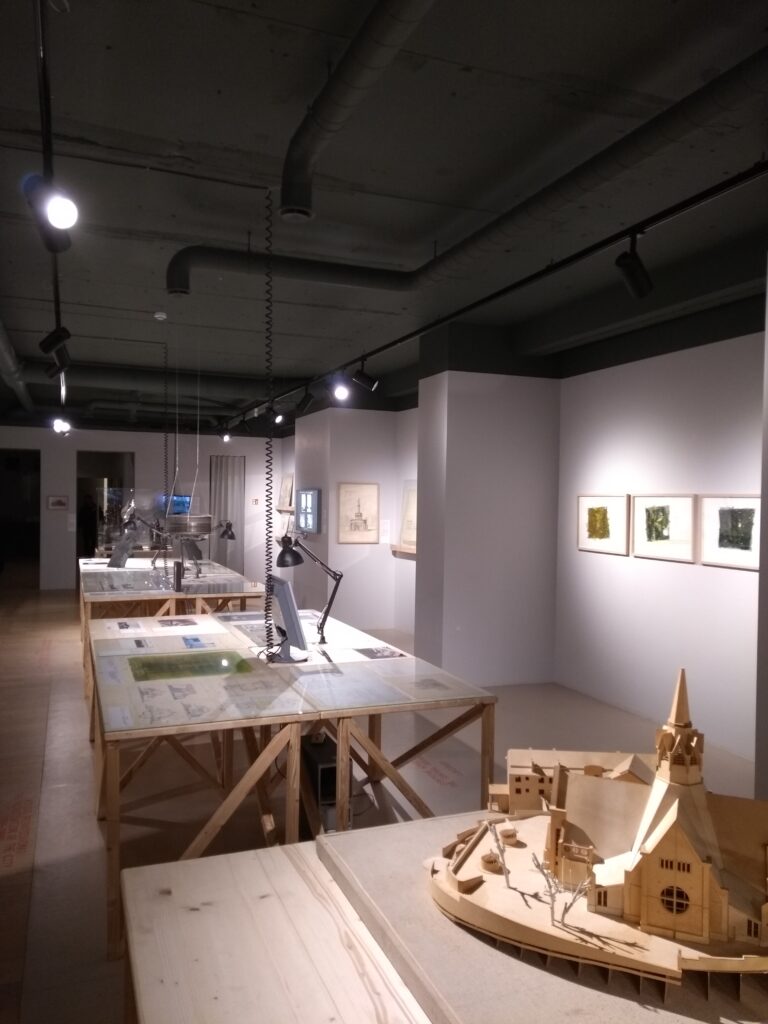
Eine weitere Entdeckung, die ich gemacht habe, sind die Secondhandläden namens Humana, die es an vielen Ecken in Vilnius gibt. „Humana People to People“ zielt auf die Förderung der Entwicklungshilfe ab. Alle sprechen von Humana, alle kaufen bei Humana und trotzdem war ich erst vor einer guten Woche zum ersten Mal da. Es war toll. Schöne, alte Winterpullis kosten zwischen zehn und 13 Euro, an Angebotstagen Ende des Monats gehen die Preise runter auf 50 Cent. Und dabei sind sie so in.
/
Another discovery I made is the thrift stores called Humana, which are located on many corners in Vilnius. „Humana People to People“ aims to promote the development aid. Everyone talks about Humana, everyone buys from Humana, and yet I was there for the first time just a little over a week ago. It was great. Nice, old winter sweaters cost between ten and 13 euros, on offer days at the end of the month the prices go down to 50 cents. And they are so in.
Außer in der Gediminas Avenue gibt es in Vilnius‘ Innenstadt und wunderschönen Altstadt (die dem Weltkulturerbe angehört) keine Einkaufszentren. Die liegen außerhalb. Die Busverbindung dorthin ist gut. Ich habe noch nicht über die Trolleybusse geschrieben, die an den Stromleitungen hängen, die über die Straßen führen.
/
Except for Gediminas Avenue, there are no shopping centers in Vilnius‘ downtown and beautiful Old Town (which is a World Heritage Site). They are located outside. The bus service there is good. I haven’t yet written about the trolley buses that hang from the power lines that cross the streets.
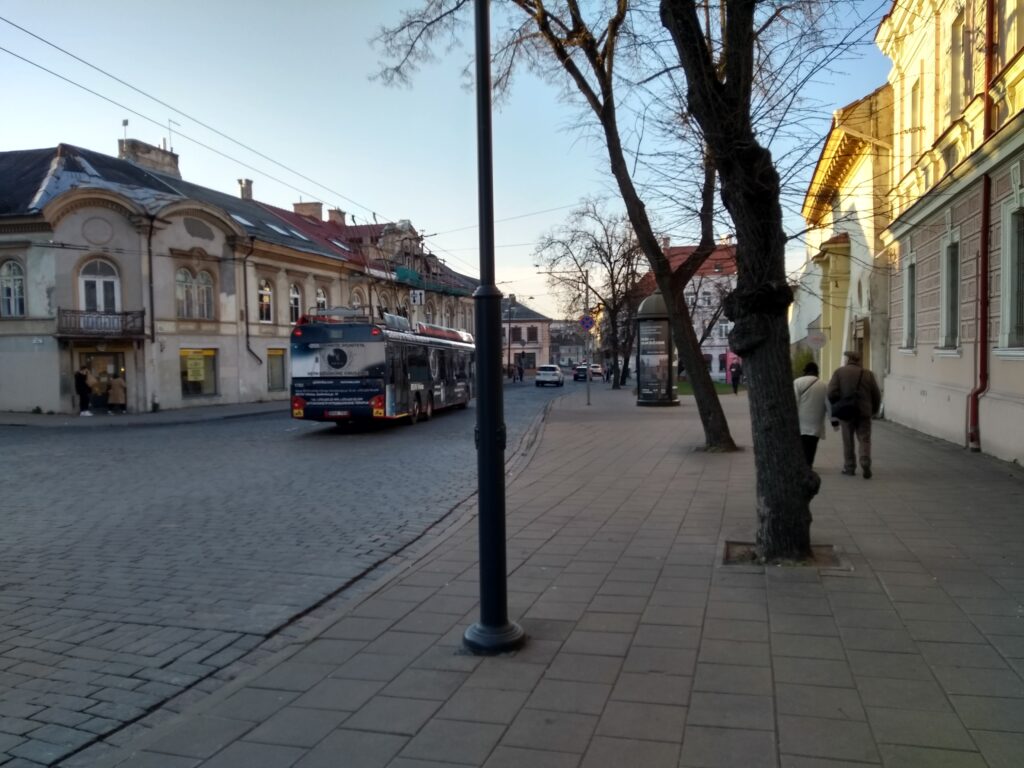
Auf diesem Bild ist ein neuerer Trolleybus abgebildet. Die traditionellen Trolleybusse sind rot-beige und sehen von innen aus wie eine Straßenbahn aus den 50ern. Sie öffnen die Türen schon im Fahren. Wenn man nicht aufpasst, kommt man nicht mehr raus (oder wird zerquetscht, was schon sehr ermutigende Warnschilder anzeigen). Auf diesem Bild winzig fährt ein solcher Trolleybus:
/
This picture shows a newer trolleybus. The traditional trolleybuses are red-beige and look like a streetcar from the 50s from the inside. They open the doors already while driving. If you’re not careful, you can’t get out (or get crushed, which is already indicated by very encouraging warning signs). On this picture tiny drives such a trolleybus:

Es gibt aber auch normale Busse ohne Fühler. Beim Busfahren ist mir direkt aufgefallen, dass in Vilnius beim Ein- und Aussteigen wenig Rücksicht genommen wird – auf sowohl andere Ein- als auch Aussteigende. Jeder versucht, der oder die erste im Bus zu sein. Die Norm, erst andere aussteigen zu lassen, existiert hier nicht. Schon auf dem Weg zur Tür wird man teilweise beiseite geschoben.
/
But there are also normal buses without sensors. While riding the bus, I immediately noticed that there is little consideration in Vilnius when getting on and off – for both other people getting on and off. Everyone tries to be the first one on the bus. The norm of letting others off first does not exist here. Even on the way to the door, you are sometimes pushed aside.
Die Einkaufszentren „Ozas“ und „Akropolis“ sind riesig.
/
The shopping centers „Ozas“ and „Acropolis“ are huge.
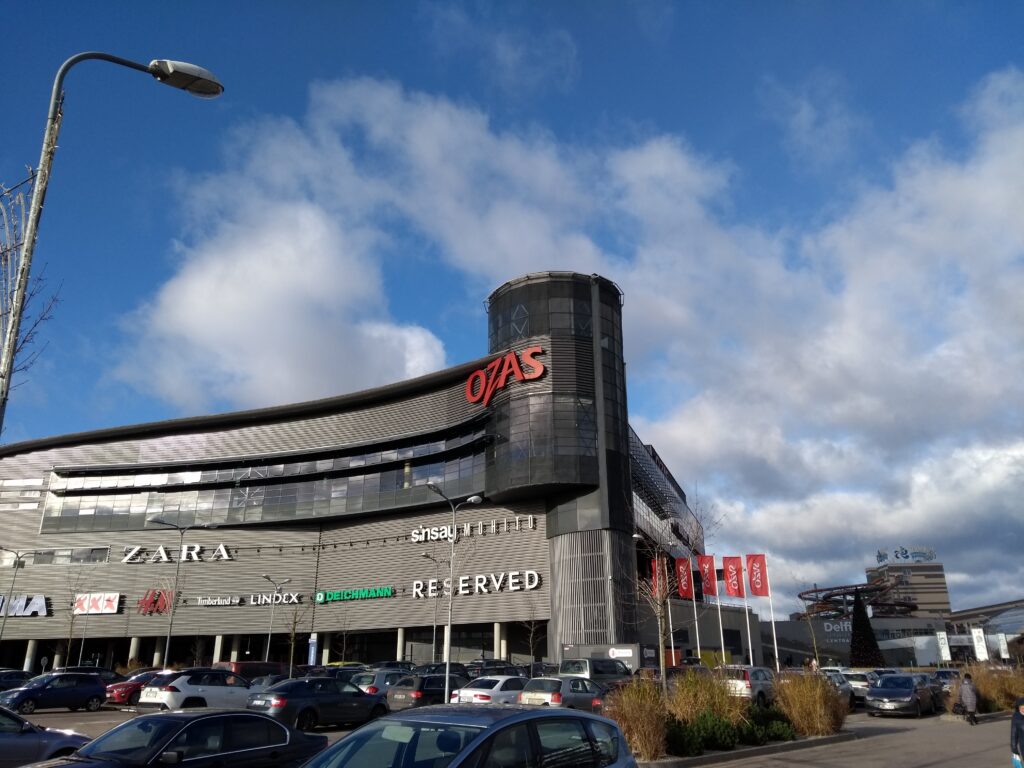
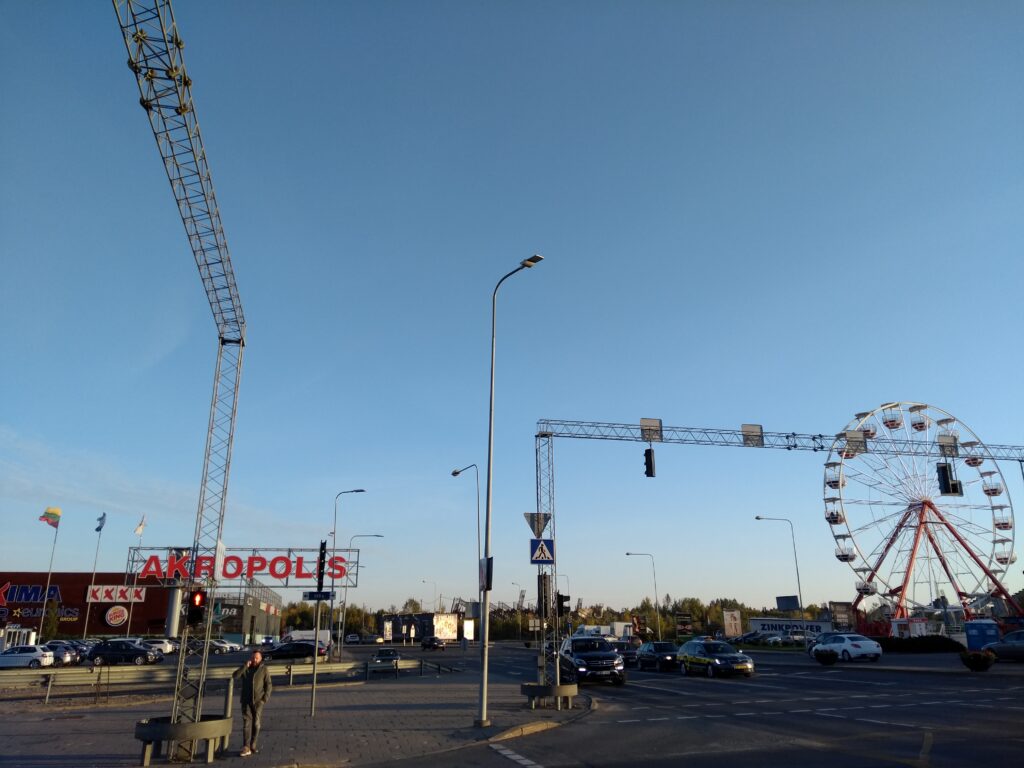
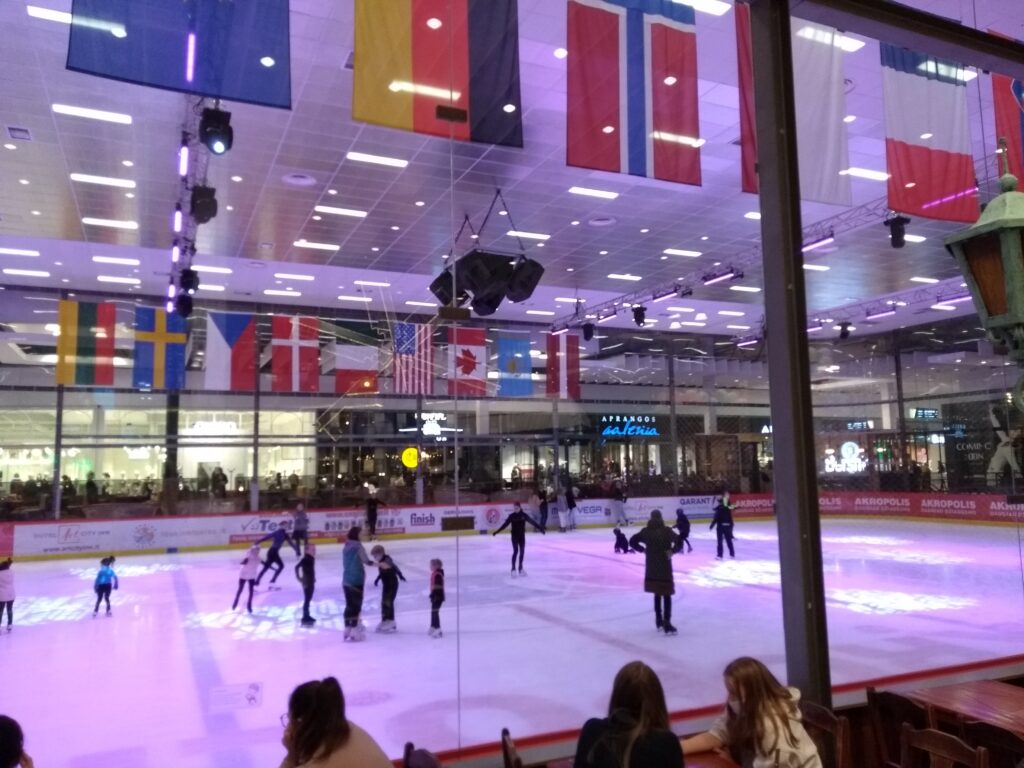
In der Akropolis gibt es sogar eine Eisbahn und in beiden Einkaufszentren befindet sich ein Kino (für Studierende 4,50€ bzw. 6€). Mein Lieblingskino ist bisher das Skalvija, ein künstlerisches Kino mit rot-goldenem Foyer, das zentraler gelegen ist und in dem der Eintritt für Studierende nur drei Euro kostet. Wie schon erwähnt, werden die meisten Filme auf Englisch mit litauischen Untertiteln gezeigt. Ich schaue gleich mal in das Programm für die nächsten Tage!
/
There is even an ice rink at the Acropolis, and both shopping centers have a movie theater (€4.50 and €6 for students, respectively). My favorite cinema so far is Skalvija, an artistic cinema with a red and gold foyer, which is more centrally located and where the entrance fee for students is only three euros. As I mentioned, most of the films are shown in English with Lithuanian subtitles. I’ll check out the program for the next few days right away!


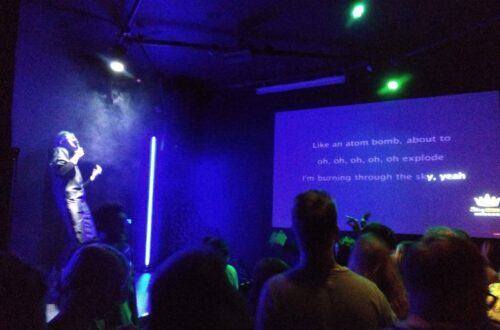
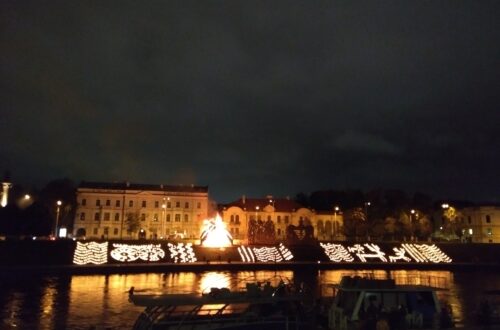

3 Kommentare
Rica
Super geschrieben es gibt auch schöne Cafés für Studenten
tintenstiller
Ja, die gibt es! 🙂
Pingback: